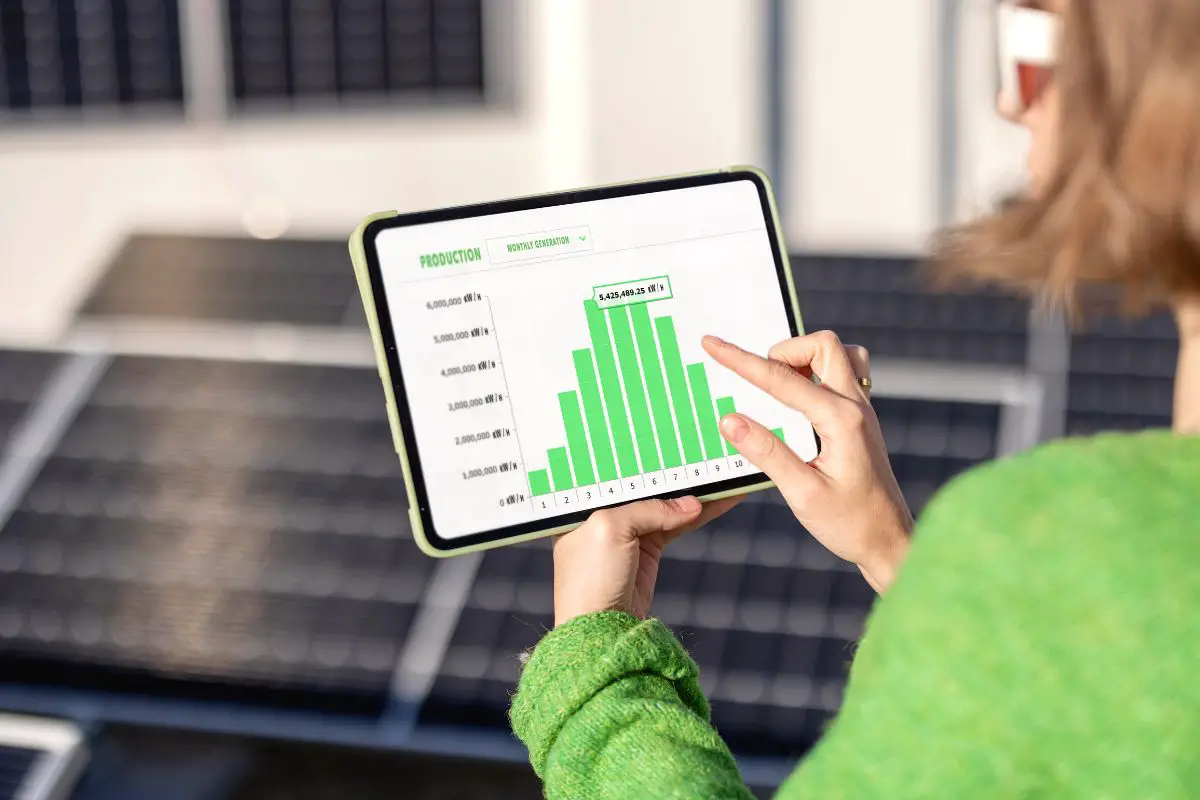Do You Need a Solar Monitoring System (+ How to Choose)
Opening an app and viewing your home’s energy use patterns in real time sounds like a cool feature. But there is a lot more to it than that.
Quite simply, installing a solar panel array on your rooftop is not enough. You need to ensure that the solar panels are delivering their best output. This is where the solar panel monitoring system plays such an important role.
Perhaps you are thinking about the budget. Is solar monitoring worth it? After all, you are not someone who loves to crunch numbers, especially for something that’s likely to bite off a nice chunk of the money pie from your credit card.
So, stick with me here as this article will help you to understand the importance of a solar monitoring system.
What Is Solar Monitoring
Wouldn’t it be great if you could take a single look at the solar panel system and determine its performance?
The reality is, solar panels are not mechanical devices that you run daily like your car. In other words, you can’t find out if there is something wrong with the system by the way it looks or sounds. They sit silently on the roof, generating power on their own, and more often than not get overlooked.
Worst case scenario – imagine what it would be like to get a shocker of a power bill at the end of the month.
Since the performance of the panel system depends on all kinds of ever-changing environmental factors, monitoring it all the time would be a complex and time-consuming task. It makes a lot of sense to have an automated system that is programmed to track the performance and output of the panels.
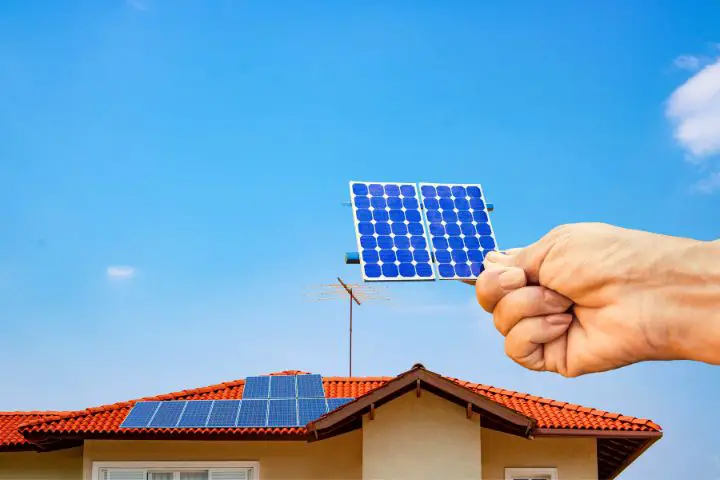
In fact, the term solar monitoring is self-defined. A monitoring system can keep an eye on its performance and warn you in case of any efficiency loss or malfunction. This monitoring is done by connecting the system with sensors that track the energy production rate. This is transmitted to a communication device and stored on a cloud-based software platform.
The connection? Like any other smart(ish) device in your home, it can be through wired Ethernet, a cellular connection, or your home Wi-Fi. The monitoring apps that function using cellular-based connectivity will deliver outputs even if there is an internet outage.
And now to the sexiest part. You can access the data through a dedicated mobile app or a tracking website. Real-time monitoring systems also deliver alerts and notifications in case of a drop in power generation or system malfunction. It goes without saying, any damage to the panel system will affect performance. The monitoring system can point out such issues that can only be detected by checking the electricity flow pattern. In other words, if you don’t have one, your array could be underperforming for ages without you ever finding out!
Both live tracking and data recording are possible through smart systems connected to the Internet of Things (IoT). Most of these systems are integrated with cloud-based online servers that allow the software to use the data in various ways.
That may sound complex, but in reality, things are much simpler. Manufacturers know that it’s not possible for all homeowners to interpret complicated spreadsheets effectively. So, the data is graphically represented in the form of colorful and interactive bar charts, maps, or pie charts, making it easy to interpret.
Moreover, you can track your home’s power consumption and monitor any seasonal spikes or drops. Some systems can also provide alerts on low-sunlight days or incoming storms by tracking weather forecasts. This allows you to prepare for emergencies and prevent any power shortages. If you ask me, that is an incredibly handy feature to have.

Feel like doing some comparative analysis of power generation and use? You can use the stored data to check patterns over any time period. Some apps can also provide payback estimation time along with insights into the status of the battery unit.
Some reports suggest that the solar monitoring market in the US is set to grow from USD 34.8 Billion in 2020 to USD 51.2 billion in 2028. The robust growth rate indicates that end-users are taking solar monitoring systems seriously.
Types of Solar Monitoring Systems
As you already know, in a grid-tied system, the excess power is directed to the grid. That means the system performs without a battery. On the other hand, there are off-grid systems that use storage batteries.
The monitoring systems used for these two types of solar systems are different. The off-grid monitoring systems are specially designed to constantly check the battery’s state of charge and to optimize its life.
Based on their functioning, solar monitoring systems are classified into two main categories.
Equipment-integrated or Inverter-based Solar Monitoring
The main function of the inverter is to convert the direct current (DC) output of the panels to alternating current (AC) for home use. Communication modules are built into these inverters that help in collecting data. String inverters are connected to the entire panel array, whereas microinverters connect with individual panels and provide more in-depth data.
In most cases, such type of monitoring comes as a part of the solar panel system and delivers the data through a smartphone app or a website. You can compare the electricity production and consumption rates from the data gathered. However, not all inverters deliver real-time energy usage information.
Usually, solar installers repackage the inverter data to make it more user-friendly. Additional features like detection of failures and remotely updating inverters are also provided. With a warning system through alerts, SMS, or email, you can get the system back on track at the earliest possible time.
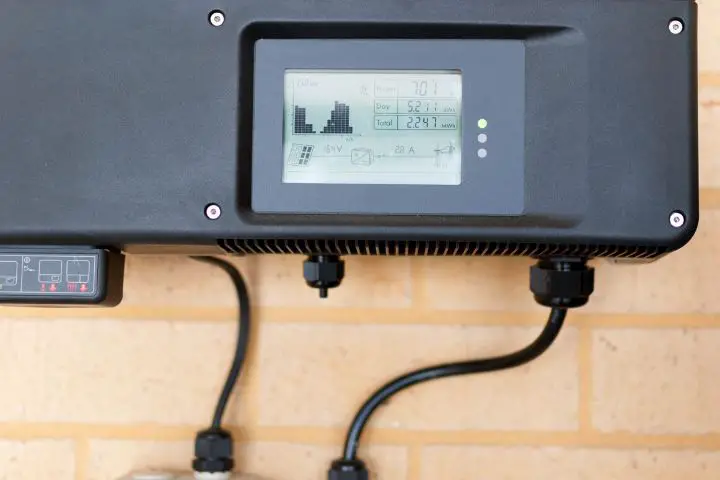
Third-Party Monitors
Third-party monitoring systems are provided by companies that do not manufacture panels or other solar equipment. These units are attached to your electrical breaker box while the sensors are hooked up to measure the electric flow.
Such systems are more flexible and can be customized based on the specifications of your PV system. They include sensors that are connected to a home’s electrical circuit and provide detailed information about your energy usage.
The other advantage of these systems is their scalable architecture. You can easily integrate them with additional needs that can come up in the future. Most third-party devices are also in compliance with safety and regulatory standards in North America.
One of the popular options on the market is the Sense Home Energy Monitor. Here’s what Sense CEO Mike Phillips said in an interview with CNET. “In terms of what Sense can detect and what users can expect, this varies a lot by home, based on the signatures of your devices and how similar their power profile is to other devices in your home. We model each home’s devices individually.”
From energy use, to bill monitoring and greenhouse gas emissions, the monitoring apps will tell you everything you may (or may not) want to know about your energy usage. Moreover, you can set energy goals to improve your home’s overall energy efficiency by going through previous energy usage data.
How to Choose the Right Solar Monitoring System
Many owners assume that the inverter unit connected to the solar array will be enough to monitor the system. The question is, are string or microinverter-based operating systems enough?
Not always. Firstly, not all inverters include a monitoring system. For such systems, a third-party monitoring system is a good option. Then again, a solar inverter is a complex device in itself and may malfunction. Without an external warning system, you may fail to notice it.
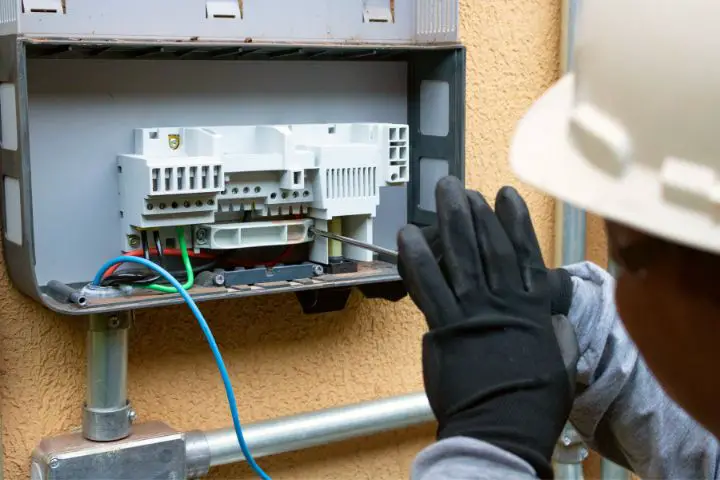
Most modern solar systems will come with a system for monitoring your solar production. However, many will not have a system for monitoring both production and household energy consumption on the same screen.
According to Michele Ladd, commercial and utility sales engineer at solar equipment distributor company Renvu, “The inverter manufacturer’s software may show how the system is operating and the generation, but not necessarily how the energy is being used,”
Take Tesla monitoring system as an example. While the Tesla app interface is slick and easy to use, the functionality remains basic. It doesn’t have the advanced features that allow you to pinpoint energy drains and optimize your power consumption.
With a third-party system, you can track energy production and compare it with consumption. By understanding how these two work together, you can avoid a bill shock. Even better, you identify power-hungry appliances and change the usage patterns to optimize consumption.
Now you may ask, how about a DIY solar monitoring system?
To be honest, that’s not a good idea unless you have in-depth knowledge of electric circuits and power systems. Taking support from a licensed electrician for the system installation is the safest option. Improper installation can damage your equipment and can be a safety concern.
In reality, there are some DIY ways to add a screen to your solar inverter to make it more user-friendly. However, you need to have the time and patience to work through the process.
How Much Does a Solar Monitoring System Cost?
The price of a solar monitoring system depends on its features. Some manufacturers offer complete packages that include panels and a monitoring system. In such cases, the price of the system will depend on the size of the panel array.
Other than that, there are third-party monitoring systems that are available separately. These systems are priced between $170 to $400 based on the features. Obviously, more advanced features will have a higher price tag.
Reviews of these metering systems are mostly positive. Users mentioned how the monitors helped them to identify inefficient appliances and get rid of phantom loads. Replacing inefficient appliances with more efficient ones results in significant power savings. Others also praised the data accuracy of the sensors.
For many users, a closer look at their energy usage pattern was an eye-opener in terms of kilowatt-hour (kWh) consumption. This helped them to reevaluate their power needs before installing a solar panel array.
Why Solar Monitoring Is Important
It’s true that solar panels require minimum maintenance. However, things can go wrong and lead to a reduced output. Imagine a rodent chewing through the wires and causing a short circuit.
That makes continuous monitoring necessary to keep the system working without any hitches. Besides, knowing that your system is being monitored all the time gives you that additional peace of mind.

Here are the main advantages of a solar power monitoring system.
- They help to maximize panel performance and take necessary preventive actions to improve performance.
- Allow you to make data-driven decisions for selecting the best time for running energy-intensive appliances. This will reduce dependency on the grid and maximize your solar savings.
- It helps in understanding any fluctuations in your energy bill and allows you to take the right steps to reduce bill fluctuations.
- The system can point out repair solutions for solar equipment ensuring the least downtime and assisting in preventive care.
- Advanced systems come with features like remote monitoring that allow you to change system settings and operating modes without being physically near the system. Even technicians or the customer service team can use this feature to diagnose and resolve any system issues.
- Some monitoring apps can display the carbon footprint of your home and help in improving energy efficiency.
Having said that, solar power monitoring systems are not without a few disadvantages. Take a look at a few of them.
- Some systems are dependent on internet connectivity to deliver alerts and notifications. So, using them with off-grid solar systems can be challenging. Real-time data monitoring will not be possible without a stable internet connection.
- Installing a third-party solar monitoring system will involve additional costs.
- Just like all devices connected to the internet, these systems are vulnerable to cyber-attacks. That makes it necessary to take the right security measures while using.
- In some cases, there might be compatibility issues with the solar inverter. You can avoid this by using monitoring systems developed by the OEM.
- Downloading the data locally may not be possible with these apps. If you are a geek and want to do more analysis on the power usage data you might be disappointed.
Final Thoughts
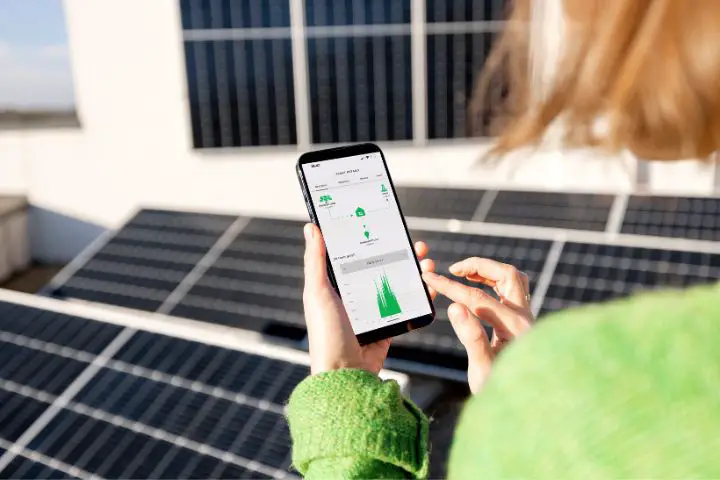
Let’s get back to the question- is solar monitoring worth it?
The answer?
Absolutely!
Bottom line: staying alert about the status of your solar power generating system makes a ton of sense. For any smart home, effective management of its power usage is a must. With solar monitoring, you get more awareness about the system’s performance and better energy monitoring. And that allows you to manage your energy consumption more intelligently.
Based on the available options, you need to pick a solar monitoring system that works best for you. Make sure to pick a reputed brand after checking the reviews and ratings.

